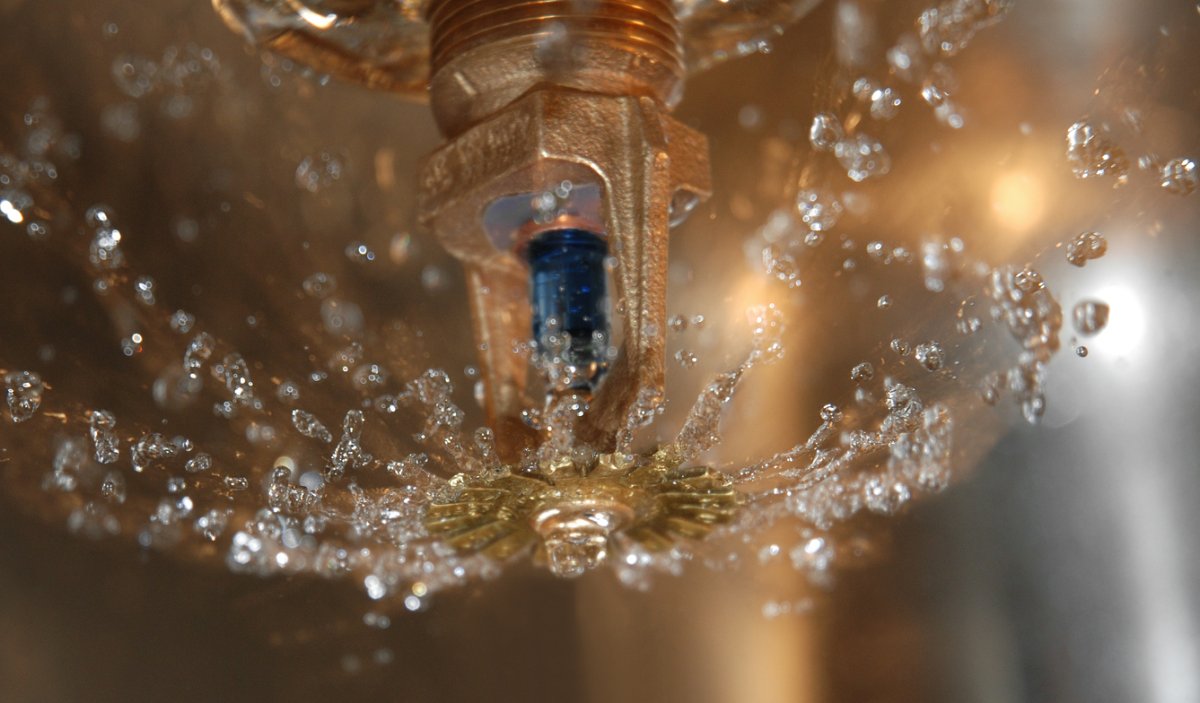We may earn revenue from the products available on this page and participate in affiliate programs. Learn More ›
Highlights
- For $0.80 to $7, or just $2 per square foot on average, fire sprinkler system costs are worth the benefit of fire protection for the home’s occupants.
- The cost to install a sprinkler system depends on the type of system, the materials selected, the size of the home, and whether it’s installed in a new build or retrofitted.
- Fire sprinkler systems save lives, and the data backs it up. Homeowners with residential fire suppression systems in place have greater peace of mind, more safety from fire, and the potential for savings on their homeowners insurance premiums.
- DIY installation is not recommended since it involves installing pipes and wiring that must meet specific code requirements. Homeowners can benefit from the experience of licensed sprinkler system professionals to install a system that works safely.
A house fire can be devastating, especially if fire detection methods in place are not working or are improperly installed. To protect a house and its occupants, many homeowners opt to install a full fire sprinkler system. These sprinkler systems are proven to reduce civilian fire fatalities by 89 percent and reduce injury rates per fire by 27 percent, according to the National Fire Protection Association.
The majority of fire-related deaths happen in residential homes, and most people consider fire sprinkler systems a part of commercial buildings. However, residential fire sprinkler systems can prevent tragedy and protect belongings. According to Angi, fire sprinkler system cost falls between $0.80 and $7 per square foot with a national average of $2 per square foot. The cost primarily depends on whether it’s installed in a new build or an existing home, the size and location of the home, and the materials used.
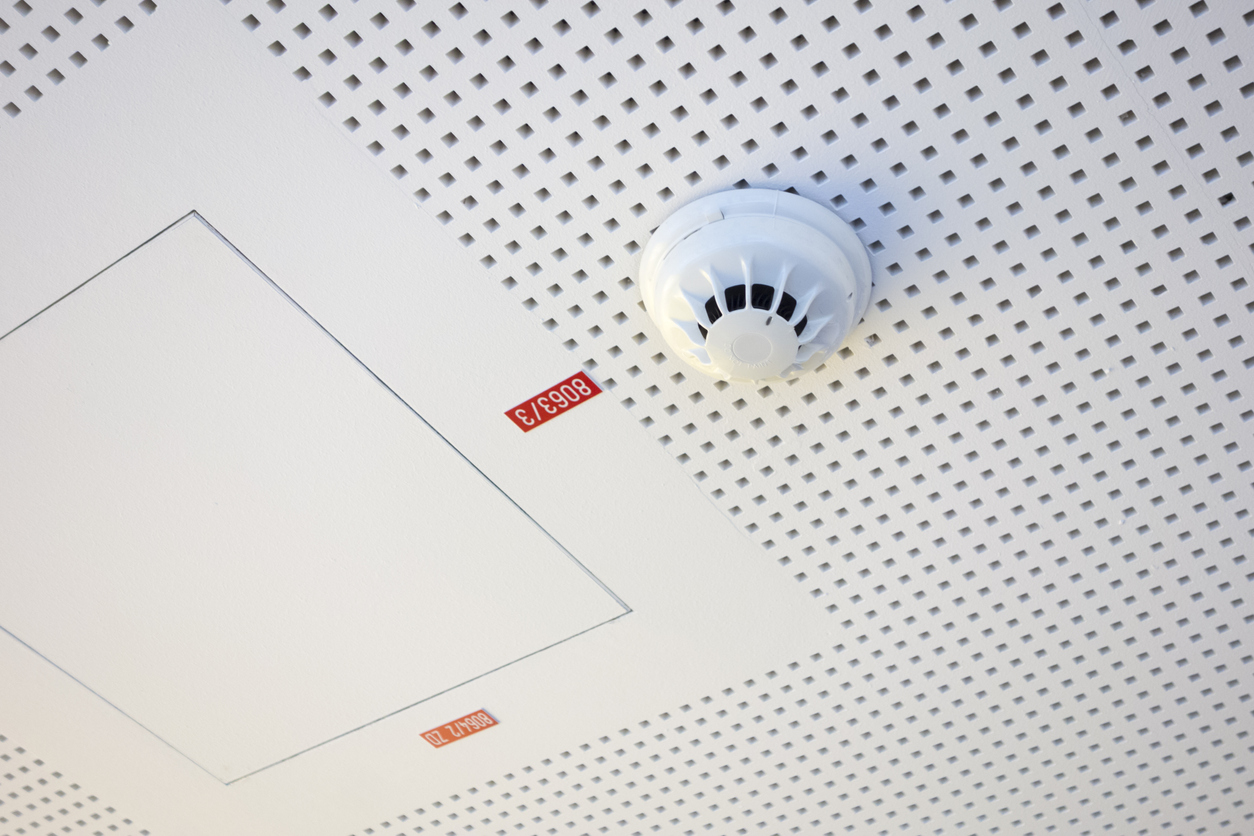
Factors in Calculating Fire Sprinkler System Cost
Since fire sprinklers and sprinkler system installation costs are largely determined by square footage, the size of the home will have a significant impact on the final price of the system. Other factors include the pipe material, the type of system and sprinkler head, the geographic location, and the permits and inspections needed to complete the work.
Home Size
Larger homes will require a larger fire suppression system, thus increasing the overall cost. Sprinkler installation cost is based on the area that needs coverage and typically falls between $0.80 and $7 per square foot with the average around $2 per square foot. For residences in high-rise buildings, the average is closer to $4 per square foot.
Pipe Material
The type of pipe material selected will impact the cost of the system, with nonmetallic chlorinated polyvinyl chloride (CPVC) or cross-linked polyethylene (PEX) pipe costing between $1 and $2 per square foot. Metal pipe, such as copper, costs between $3 and $4 per square foot. In some cases, homeowners can choose a mixture of the two pipe materials, which will average between $1 and $2 per square foot.
System Type
There are two different types of fire sprinkler systems: stand-alone and multipurpose. A stand-alone system is connected to the main water line using its own set of pipes to disperse water during a fire. Stand-alone systems require new plumbing throughout the home, making the overall cost of installation between $4 and $7 per square foot.
A multipurpose sprinkler system uses the home’s existing plumbing, which can reduce the cost to between $2 and $6 per square foot. This type of system is specifically designed for residential use, but if the home is expanded, it can be difficult to update the sprinkler system.
Sprinkler Head Type
The four main types of fire sprinkler heads to choose from are pendent, upright, sidewall, and concealed. Each serves its own purpose and works best in certain locations and with certain systems.
- Pendent sprinkler heads hang from the ceiling and spray water in a circle. They’re the most common system and the type that people probably imagine when they think of sprinkler systems. Each pendent sprinkler head costs between $10 and $15.
- Upright sprinkler heads sit directly on top of the fire sprinkler pipe and point upward. These are more commonly found in commercial buildings that have an open ceiling and exposed pipes and ductwork. They cost between $6.75 to $15 each.
- Sidewall sprinkler heads protrude from the wall and are best used in smaller spaces such as a closet or where an overhead sprinkler pipe isn’t accessible or available. They look similar to an upright or pendent sprinkler, but there is a guard on the top that will help direct the water downward. Sidewall sprinkler heads cost between $15 and $20 each.
- Concealed fire sprinkler heads are ideal for a residential fire sprinkler system. They’re recessed into the ceiling and then covered with a decorative cap. In the event of a fire, the cap will detach, allowing water from the sprinkler head to reach the covered area. Concealed sprinkler heads cost between $20 and $36 each.
Geographic Location
The home’s geographic location will also impact the cost to install a sprinkler system. Labor costs and the price of materials vary from state to state and even city to city across the country. For California or New York residents, a sprinkler system can cost as much as $1,300 to $1,500 on the high end, respectively. In Arizona or Colorado, the total cost could be $600 or $650 on the high end. Current labor rates and material costs will affect the final price for a homeowner who is calculating fire sprinkler system costs.
Permits and Inspections
Installing a sprinkler system will likely require a permit and inspections depending on the local jurisdiction. Some municipalities have flat-fee permits, while others base the permit’s cost on the estimated cost of the work.
Inspections are typically required for business and home fire sprinkler systems, so homeowners will want to include inspection fees in the total cost of the project, as well as the cost of lifetime maintenance. Inspection fees will vary depending on the geographic location and the inspector’s current rates.
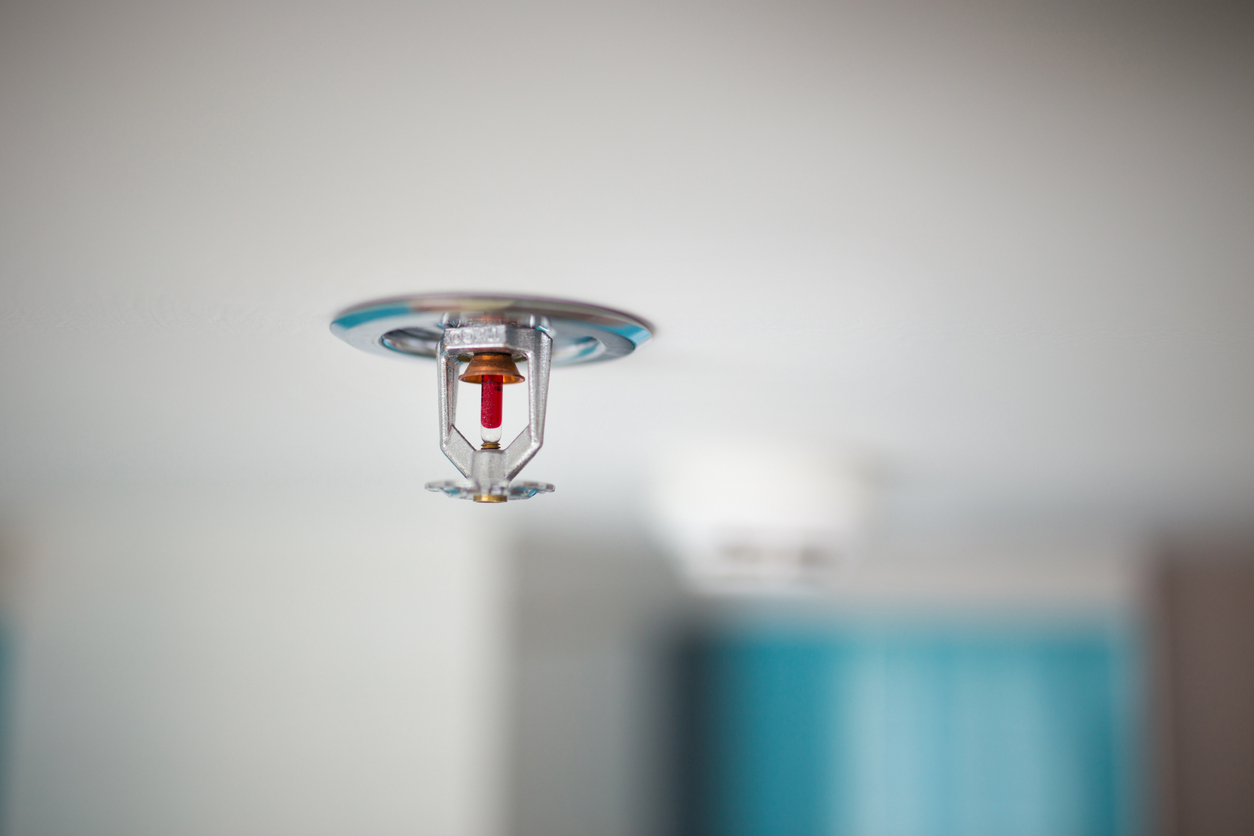
Additional Costs and Considerations
Beyond the initial factors that affect fire sprinkler system cost, there are several other costs and considerations homeowners will need to take into account when deciding whether or not to install a fire sprinkler system.
New Home vs. Retrofit
In a new home, installing a fire sprinkler system will increase the total cost of the new home by about 1 percent. Installing one during new construction is much easier since the pipes can be positioned before the walls and ceilings are added and prevent access. New home fire sprinkler installation costs between $0.80 and $2 per square foot. For existing homes, retrofitting a sprinkler system can cost between $2 and $7 per square foot to account for the extra work to install wiring and piping behind existing walls and ceilings.
Backflow Preventer
Backflow preventers are installed with a fire sprinkler system to prevent any contaminated water from flowing back into the main water supply. Installing a backflow preventer usually costs around $300, but if the home uses a well for water, then a pressure booster may be needed. These typically cost about $800.
Fire Detection Systems
Fire detection systems can alert homeowners that there is a fire in the home and give them as much time as possible to suppress it or leave the home. To protect the home and people in it, homeowners can install smoke detectors, carbon monoxide alarms, and heat sensors to detect fire as soon as possible. These systems are relatively inexpensive, and keeping them active with fresh batteries can help make sure they’re ready to sound the alarm if needed. The best smart smoke detectors can even alert homeowners about a fire through an app on their phone. While it’s likely many homes already have adequate smoke detectors, a homeowner can speak with a fire marshal about where to put smoke detectors.
| Type of Detection System | Average Cost (Materials Only) |
| Carbon monoxide detector | $15 to $150 |
| Heat sensors | $60 to $100 |
| Smoke detector | $15 to $65 |
Fire Suppression Systems
A fire sprinkler system is an incredibly effective fire suppression system, but there are other methods available for homeowners to put out a small fire. Using a fire extinguisher or fire blanket can be effective at stopping a new fire from spreading if it’s used properly and without risk to the user.
Keeping fire extinguishers around the house in easily accessible places can help the home’s occupants prevent a small fire from spreading. Fire blankets are made of nonflammable material that can withstand temperatures up to 900 degrees Fahrenheit as they smother the flames and remove the necessary oxygen fueling the fire. Homeowners are advised to inspect any type of fire extinguisher each year to make sure it’s still in good condition. Residents can find out how long a fire extinguisher lasts by looking at the expiration date on the tag.
| Fire Suppression Method | Average Cost (Each) |
| Fire blankets | $10 to $100 |
| Fire extinguishers | $100 to $500 |
Private Fire Hydrant
Cities or counties typically install and maintain fire hydrants on both residential and commercial land. If a homeowner has a fire hydrant on their property, the city is likely responsible for maintaining it, though the homeowner may be responsible for ensuring it’s always accessible. Private fire hydrants are typically installed in a private residential development or near apartment complexes. If a homeowner or developer wants to install a fire hydrant on private property, it usually costs between $3,000 and $7,000.
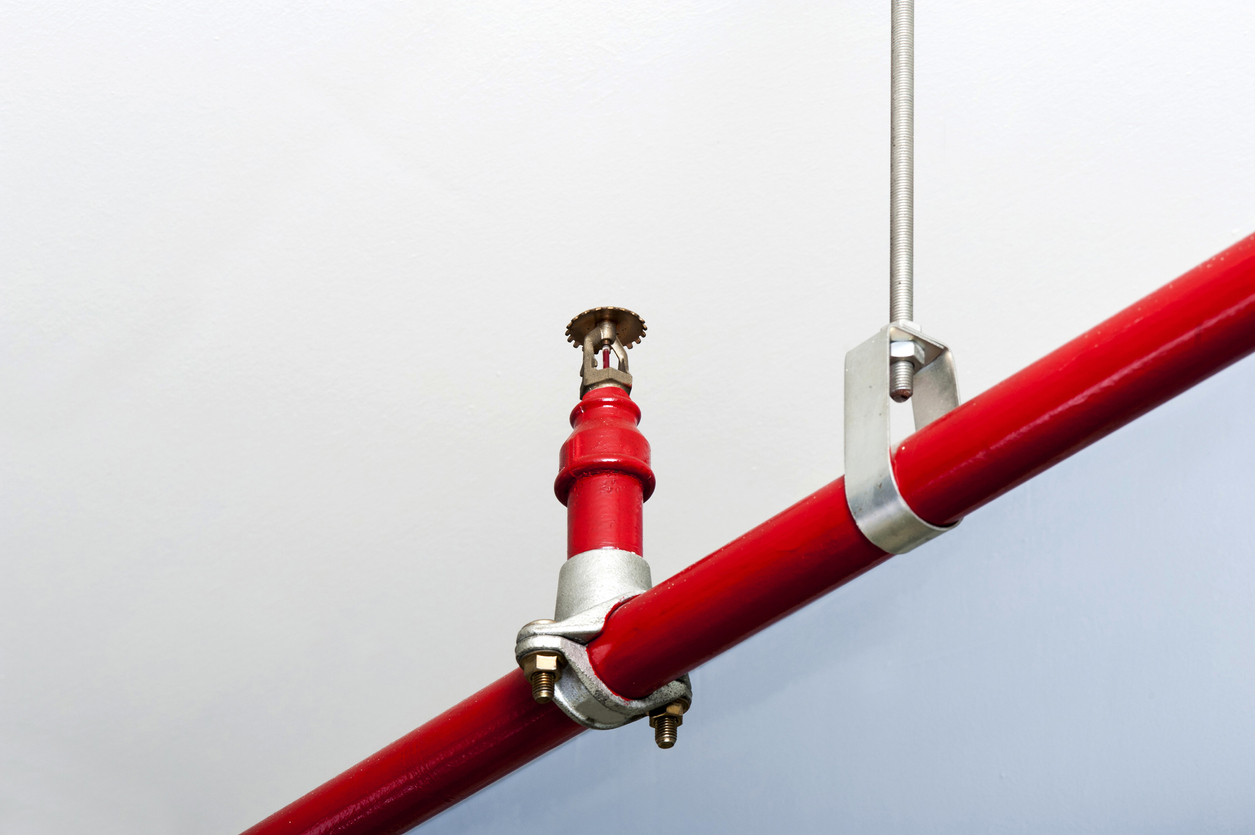
Fire Sprinkler System Cost by Type of Pipe Material
The type of pipe materials a homeowner chooses will impact the overall cost of the sprinkler system. But the choice of sprinkler system parts doesn’t just come down to the budget. Homeowners and sprinkler system installers will need to collaborate on where the sprinkler system will be installed, what method of operation is preferred, and what material will work best.
CPVC or PEX
CPVC and PEX piping are nonmetallic options that are less expensive than copper. Since they’re nonmetallic, plastic pipes suffer from a common misconception that they will melt in the event of a fire. In fact, they’re fabricated to withstand high temperatures, though their melting point is a little over 200 degrees Fahrenheit.
These materials are suitable for home fire sprinkler systems since the sprinkler system will turn on quickly enough to put out the fire before the temperature reaches the melting point. CPVC and PEX piping costs between $1 and $2 per square foot.
Copper
Copper is a popular metallic sprinkler system pipe option because it resists corrosion and can stand up to extreme temperature swings. This material is more frequently used for commercial sprinkler systems, usually due to its higher price point of $3 to $4 per square foot.
Mix
In some cases, fire sprinkler contractors may choose to install a mix of materials, using both CPVC or PEX and copper piping for a cost of between $1 and $2 per square foot.
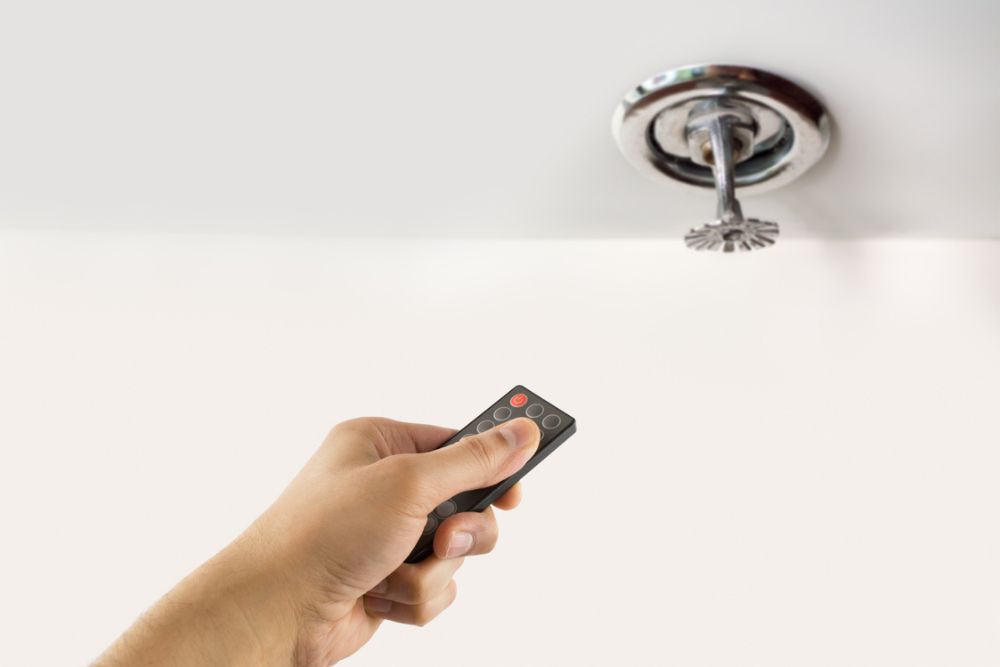
Benefits of Choosing to Install a Fire Sprinkler System
Fire sprinklers offer increased safety, decreased fire risk, and potentially, decreased homeowners insurance premiums. Perhaps most importantly, a strong fire suppression system can help homeowners worry less about the safety of the home’s occupants and their belongings in the event of a fire.
Decreased Fire Risk
Fires spread quickly, so getting it extinguished as quickly as possible decreases the risk of it spreading throughout the home. Many house fires start without a resident nearby, which is how they often grow out of control and increase fire damage restoration costs. A sprinkler system can put a fire out quickly and effectively protect the rest of the home from damage. Additionally, studies conducted by the National Fire Protection Association show that sprinkler systems installed in homes have a 97 percent success rate of preventing a fire from spreading to another room.
Though there can be concerns about the cost of water damage, the cost of fire damage is almost always higher—both in terms of property damage and loss of life. On average, a residence will experience about $21,200 in damage from a fire (one that’s not a total loss), in addition to water damage from the fire hoses.
Alternatively, home sprinkler systems produce 13 to 18 gallons per minute of water while a fire hose shoots up to 250 gallons per minute. Even with less water, sprinkler systems can douse the fire quickly enough to prevent tens of thousands of dollars of damage that will require the help of one of the best fire damage restoration services to remediate.
Increased Safety
In a home fire, residents have just under 3 minutes to escape, but a sprinkler system can stop the fire in less than 2 minutes. Recent studies by the National Fire Protection Association show that homeowners who had sprinkler systems installed in their homes had an 89 percent lower rate of fatalities. This increased safety protects homeowners from injury or death and their belongings from damage.
Improved Peace of Mind
Knowing there are fire protections and a plan in place can help homeowners worry less about their families and possessions in the event of a fire. Installing an indoor sprinkler system, adding some of the best smoke detectors, keeping the best fire extinguishers and fire blankets accessible, and having an escape plan are helpful ways homeowners can experience more peace of mind in the event of a fire emergency.
Lower Homeowners Insurance Premiums
Homeowners may wonder if home insurance covers fire damage. Typically, the best home insurance companies (like Allstate and Lemonade) typically cover fire damage, so they have a vested interest in making sure a home is as protected as possible to avoid paying for fire damage claims. That means homeowners who install a fire sprinkler system could enjoy lower insurance premiums. Some insurance companies will offer a discount, but it will depend on the company’s policy and the extent of the water sprinkler system.
Increased Home Value
Potential buyers often appreciate the added protection that a home fire sprinkler system offers, which can raise the home’s value. This can also help offset the initial installation costs, which are quite low compared with the cost of many remodeling projects.

Fire Sprinkler System Installation: DIY vs. Hiring a Professional
There are times when homeowners can step in and complete an installation project, and there are times when it’s best left to a pro. Installing a fire sprinkler system is the latter for many reasons. Fire sprinkler systems require installing proper piping and wiring to ensure it works correctly when it needs to, and fire sprinkler contractors have trained professionals on hand to complete all those tasks.
Stand-alone systems and multipurpose systems both have unique plumbing needs that most homeowners won’t be familiar with, so hiring one of the best plumbing services (like Mr. Rooter or Roto-Rooter) is essential. Installers will also understand local building codes and permitting and inspection requirements. The inspection cannot be completed by the fire sprinkler company or a homeowner either.
Homeowners who like to be involved are encouraged to make sure all other fire suppression and detection systems, such as smoke alarms, fire extinguishers, and fire blankets, are accessible and, if applicable, up to date. But a DIY fire sprinkler system is not the route to go.
How to Save Money on Fire Sprinkler System Cost
Investing in fire safety measures is always a good idea, but that doesn’t preclude homeowners from finding cost savings when installing a sprinkler system. Here are a few ways to save money while still protecting the home from a fire.
- Opt for a cheaper material. The cost of CPVC or PEX piping is lower than the cost of copper piping.
- Get multiple quotes. There are likely multiple fire sprinkler companies in an area, so it’s helpful to ask for quotes from several to get the right price and value.
- Choose a multipurpose system. It’s cheaper to install the multipurpose system since it uses existing plumbing; however, this is usually only the case for new builds.
- Use pendent sprinkler heads. The pendent style comes at a lower cost than sidewall or concealed sprinkler heads.
Questions to Ask About Fire Sprinkler System Installation
Installing a fire sprinkler system is one of the best ways to protect a home from a fire. When the sprinkler system contractor comes to install the system, it’s important for homeowners to ask some questions about the company’s fire sprinkler services so they know what to expect during the process.
- Are you licensed and insured to install fire suppression systems?
- Do you offer a written quote?
- How accurate do your quotes tend to be?
- How common is it for a sprinkler system to turn on without an active fire?
- Do the sprinklers automatically turn off after the fire is extinguished?
- How long will the installation take?
- Is labor included in the quote?
- How many sprinkler heads will I need?
- What system or material do you recommend for a retrofit on my house?
- What do I need to do to prepare the home for fire sprinkler system installation?
- How often do you install sprinkler systems?
- Who will be completing the work?
- Where will you be putting the sprinkler heads?
- Do you guarantee your work?
FAQs
Installing a fire sprinkler system in a new home won’t add much to the overall cost, so it may be an easier decision than retrofitting an existing home. Adding a sprinkler system to an occupied home is more difficult and may disrupt household operations during installation since plumbing may need to be shut off at times. Regardless, the benefits of fire sprinkler installation outweigh the costs. For homeowners who have additional questions about the average cost of a sprinkler system, the following answers may provide some clarification.
Q. Is it worth it to install a fire sprinkler system?
Fire sprinkler systems are very effective at putting out a fire before it can do much damage or before it results in injury or death. According to the National Fire Protection Association, fire fatalities were 89 percent lower and injury rates were 27 percent lower in homes where sprinkler systems were present than in homes without a sprinkler system. With this data in mind, it is likely worth it to install a fire sprinkler system.
Q. How much water does a fire sprinkler system use?
Sprinkler systems use about 18 gallons of water per minute compared with 250 gallons of water per minute produced by a fire hose hooked up to a fire hydrant. Sprinkler systems can help to protect the home’s belongings from the fire, smoke, and significant water used during firefighting operations.
Q. How do fire sprinklers work?
Fire sprinkler heads contain a glycerin-filled bulb in the center. When the temperature outside of the bulb rises between 135 and 165 degrees Fahrenheit, the glycerin inside the bulb gets hotter and expands until it bursts. This triggers the water to flow from the sprinkler head and suppress the fire.
Sources: Angi, HomeAdvisor, NFPA, NFSA, Home Fire Sprinkler, Delaware State Fire Marshal

